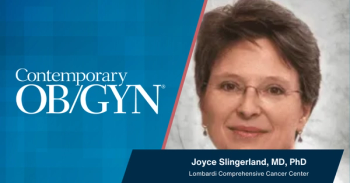
- Vol 67 No 6
- Volume 67
- Issue 6
Endometriosis and early natural menopause
Women with laparoscopically confirmed endometriosis are at significantly higher risk for early natural menopause (ENM), and this risk was greater for nulliparous women and women who never reported using oral contraceptives, according to a study in JAMA Network Open.
“Multiple mechanisms support the hypothesis that endometriosis or, specifically, endometriomas—the endometriosis subtype characterized by ovarian cysts—and the treatments associated with endometriosis may affect the quality and quantity of ovarian reserve,” said lead author Madhavi Thombre Kulkarni, PhD, a postdoctoral fellow in ob-gyn and reproductive biology at Michigan State University in East Lansing, Michigan.
Kulkarni noted that endometriosis has been linked to lower ovarian reserve among women with female-factor infertility, as well as to ovarian aging and menopause timing.
“Chronic inflammation has also been associated with endometriosis and hypothesized to be associated with early menopause,” she said. “Furthermore, women with endometriosis have peritoneal fluid that contains more activated proinflammatory, chemotactic and oxidative stress factors. These factors could create an environment that is detrimental to follicular and ovarian function, which can lead to early menopause.”
The large, population-based cohort study analyzed data from the Nurses’ Health Study II cohort questionnaires from 1989 to 2015. The sample comprised 106,633 premenopausal women, aged 25 to 42 (mean age 34.8) at enrollment in 1989.
Laparoscopically confirmed endometriosis was linked to a 50% greater risk for ENM, which was defined as natural menopause before age 45.
This risk was comparable after adjusting for race and ethnicity, plus for time-varying anthropometric and behavioral factors.
However, endometriosis was associated with a greater risk for ENM among nulliparous versus parous women. Furthermore, the risk was greater than two-fold for women who never used oral contraceptives compared to those who had.
But there were no significant differences between endometriosis and ENM by body mass index (BMI) (<25kg/m2 vs. ≥25kg/m2), cigarette smoking status or history of infertility attributed to ovulatory disorder.
“Future research is needed to explore if the increased risk of ENM is found in those with only superficial peritoneal endometriosis or is highest in those with endometriomas,” Kulkarni told Contemporary OB/GYN®.
Because endometriosis was found to be a key risk factor for ENM, “considering whole health across the life course is important for women with endometriosis and their clinicians,” she said.
There is a large body of literature and frequent training opportunities from the American Association for Gynecologic Laparoscopists (AAGL) and other national and international gynecologic and surgical societies focused on endometrioma treatment decision algorithms and surgical methods that minimize damage to the ovary, according to Kulkarni.
“While protection of the ovary is prioritized most often in the context of preserving fertility, the findings of our study may suggest that those best practices also preserve reproductive duration and time to menopause,” she said. “This is speculation, however, without direct evidence available in the study, so the impact of endometriosis treatment in general and endometrioma excision specifically as mediators of the relationship between endometriosis and ENM must be quantified in future studies.”
Kulkarni noted that current study findings need to be replicated in other populations. She also said that the prevalent and impactful condition of endometriosis deserves more research funding, better access to and proactive care, and heightened attention and awareness across the entire span of a woman’s life.
Reference
- Thombre Kulkarni M, Shafrir A, Farland LV, et al. Association between laparoscopically confirmed endometriosis and risk of early natural menopause. JAMA Netw Open. Published online January 21, 2022. doi:10.1001/jamanetworkopen.2021.44391
Articles in this issue
over 3 years ago
How to identify common pediatric vulvar conditionsover 3 years ago
The world of the pediatric adolescent patientover 3 years ago
Managing genital and pelvic pain in young patientsover 3 years ago
Get a grip on revenue cycle managementover 3 years ago
Providing the best care for transgender adolescentsover 3 years ago
What did you miss at ACOG?over 3 years ago
Up close and personalover 3 years ago
FDA approves first drug for RVVCover 3 years ago
FDA warns that NIPS tests may provide false resultsNewsletter
Get the latest clinical updates, case studies, and expert commentary in obstetric and gynecologic care. Sign up now to stay informed.




